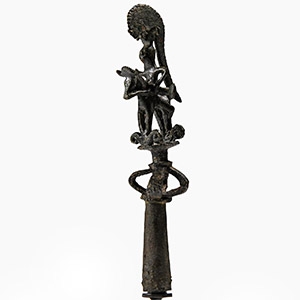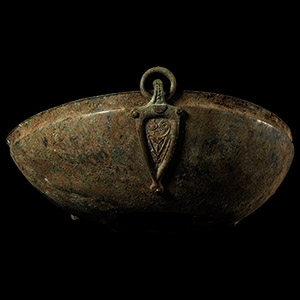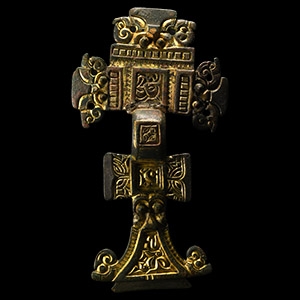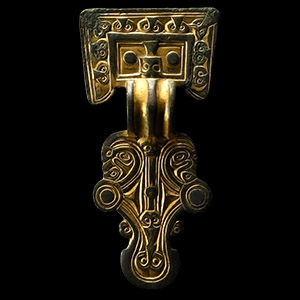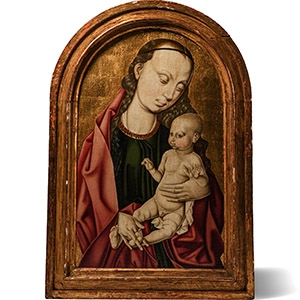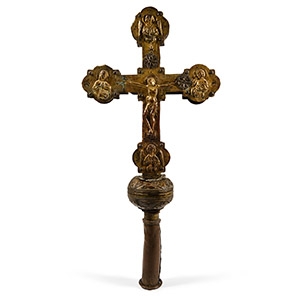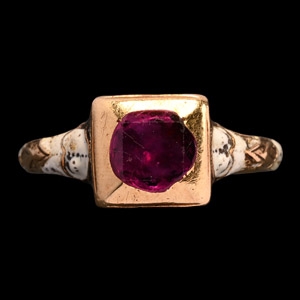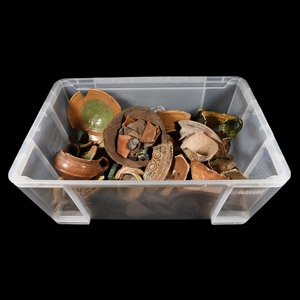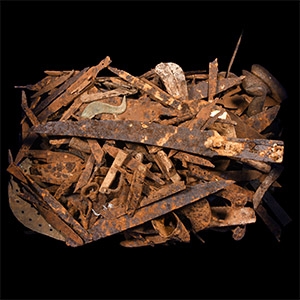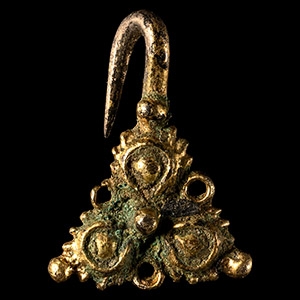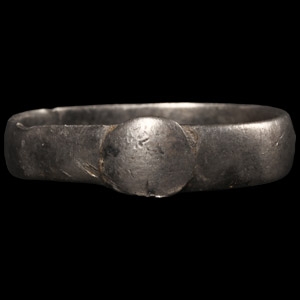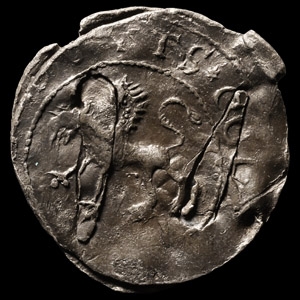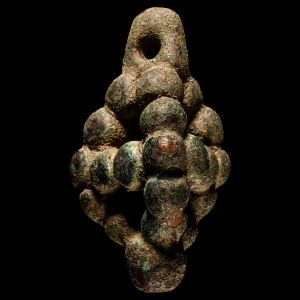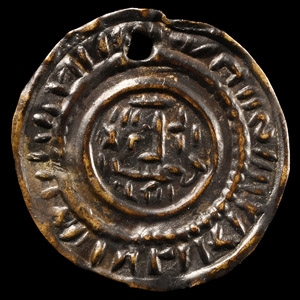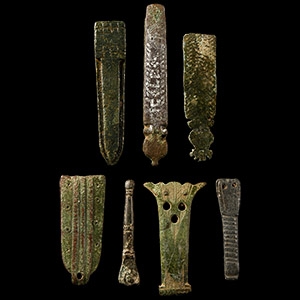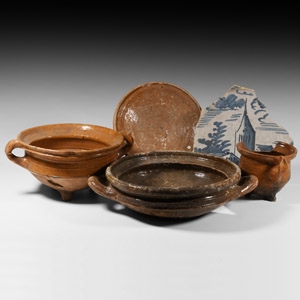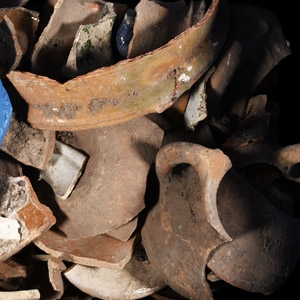Home > Auctions > 5 - 9 September 2023
Ancient Art, Antiquities, Natural History & Coins
Auction Highlights:
Acquired on the UK market, 1990s.
Property of a retired academic.
Acquired 1990s-early 2000s.
East Anglian private collection.
Cf. for similar examples of two-handled cooking pots from Low Countries Brown, D., H., Pottery in Medieval Southampton, c.1066-1510, Southampton, 2002, fig.268.
Among the interesting objects of this hoard there is a two-handled cooking pot with partial internal and external clear glaze. These late medieval potteries (circa 1490-1510) were often imported to England from the Low Countries. If in the high medieval period French potteries remained the most common Continental import, in the late Medieval Age the products of France, the Low Countries, the Rhineland and the Iberian Peninsula occurred in roughly equal proportions.
Acquired 1990s-early 2000s.
East Anglian private collection.
Acquired on the UK market, 1990s.
Property of a retired academic.
Found Sedgemoor, Somerset, UK.
Accompanied by a copy of the British Museum's Portable Antiquities Scheme report no.SOM-01346D.
Disclaimed under the Treasure Act with Treasure reference no.2017 T506.
Found Billingsgate spoil from the Thames foreshore, London, UK.
Acquired on the UK art market.
Property of a Ruislip, UK, gentleman, by inheritance.
Found Billingsgate spoil from the Thames foreshore, London, UK.
Acquired on the UK market, 1990s.
Property of a retired academic.
English collection, 1980s.
Acquired on the UK art market.
Ex property of an Essex gentleman.
Ex private Merseyside, UK, collection.
Cf. Chadour, A.B., Rings. The Alice and Louis Koch Collection, volume I, Leeds, 1994, item 641.
Acquired 1990s-early 2000s.
East Anglian private collection.
Cf. for similar examples of redware tripods from Low Countries Brown, D., H., Pottery in Medieval Southampton, c.1066-1510, Southampton, 2002, fig.28.
The majority of ceramics here presented are kitchen wares. Usually cooking pots are the most numerous forms in the majority of medieval contexts. They are mostly related to domestic functions, cooking pots being used to boil food or fry it. They come in different sizes and have globular bodies, everted rims and one or two handles. Ceramics from Dundee, Scotland, and Southampton, confirm that one of the most common vessel types employed among 1490-1510 A.D. was the tripod pipkin, with globular body, rounded base, three legs and a single or double handle, like the specimen here visible. These specimens were very often redware pottery imported from the Low Countries.
Acquired 1990s-early 2000s.
East Anglian private collection.
1357 - 1368 of 2453 LOTS

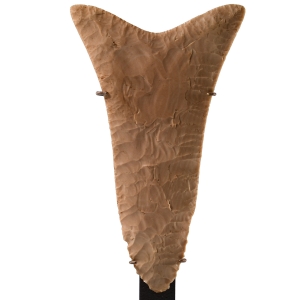
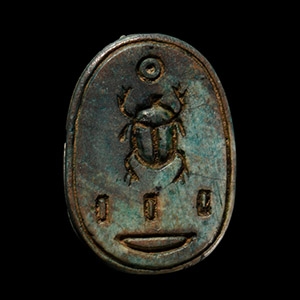
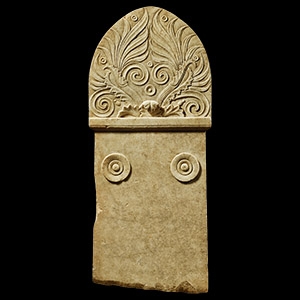
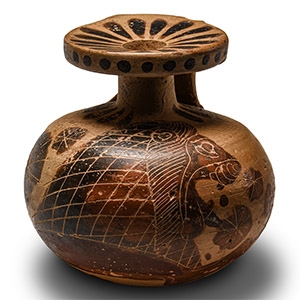
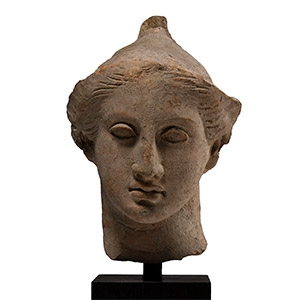
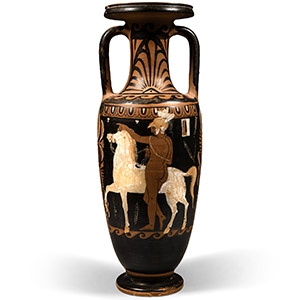
.jpg)
.jpg)
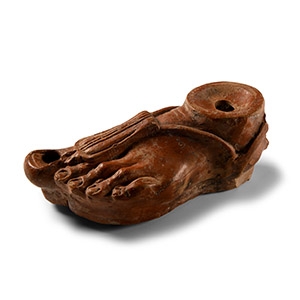
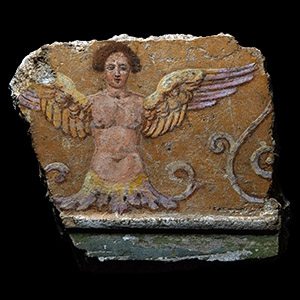
.jpg)
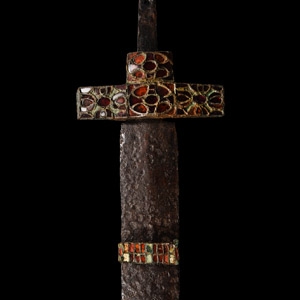
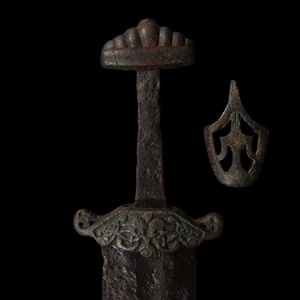
.jpg)
